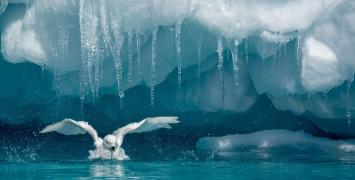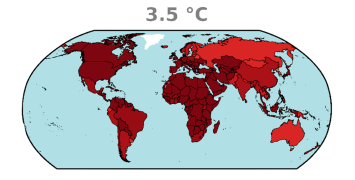Will climate change strengthen tsunami-like floods in Europe?
By the end of the 21st century, sea levels are estimated to rise between 40 and 60 centimetres worldwide. Coping with this will be a major challenge for many European coastal communities. ERC grantee Jadranka Šepić at the University of Split in Croatia is investigating how climate change will affect the strength and frequency of tsunami-like flooding events along European coastlines. Her research could help coastal communities prepare better for future challenges.

Long before rising sea levels brought about by climate change ever became an issue, mysterious tsunami-like waves pounded parts of the European coastline, appearing suddenly, flooding cities and ports, and causing major economic damage.
Unlike tsunamis caused by earthquakes, these destructive sea waves – known as meteorological tsunamis or meteotsunamis – appear due to sudden changes in atmospheric conditions. Scientists still don’t know how often they are likely to appear nor which parts of the European coast they are likely to hit. They also don’t know how climate change will affect their frequency and severity in the future.
‘Right now these tsunami-like events are not taken into account when people are estimating the height of flooding at the end of the 21st century brought about by climate change,’ says Jadranka Šepić at the University of Split in Croatia, principal investigator of the ERC-funded SHExtreme project, who is studying this phenomenon. ‘But this is something that should definitely be added to the present risk of sea level rise in Europe.’
The SHExtreme project aims to develop the first comprehensive analysis of the intensity, frequency and spatial distribution of such extreme sea level events along European coasts, so that they can be taken into account in future coastal planning. ‘The final goal after five years is to have a special map showing which parts of Europe are endangered and to what extent’, Šepić says.
Watching this video you are accepting Youtube cookies policy
Weather forecasting in reverse
In order to get this pioneering work done, Šepić and her team will first have to look at the past. Sea level has been measured since mid-19th century and from the beginning of the 20th century, there have been measurements every hour. Their first task will be to analyse this vast amount of data, identifying where and when these extreme events occurred. They will also look for evidence of such events in old newspapers and other historic records.
The next step will be to figure out what caused these events in the first place. For this, Šepić and her team will do something similar to weather forecasting but in reverse. They will look at weather patterns, which were present along coastlines when these events occurred, trying to pin down the exact atmospheric conditions that caused them.
After shedding light on weather patterns that favour such events, Šepić and her team will be ready to start predicting the future. For this, they will use existing models that predict future atmospheric conditions. This will enable them to determine if the weather patterns causing such meteotsunamis are likely to become more or less frequent in Europe.
The final step will be to factor in the effect of rising sea levels due to climate change. Taking into account the future atmospheric conditions and the rising sea levels – how bad are these extreme flooding events likely to get along different areas of the European coastline?
‘If the sea level rises but atmospheric conditions causing these extreme floods diminish, then we will probably not see increasing floods,’ she says. ‘However, if the sea level rises and the atmospheric conditions stay about the same, we will have more floods just because they will start from a higher mean sea level. The worst-case scenario would be a sea level rise combined with atmospheric conditions that are more conducive to such events. Then we’ll have more floods and stronger ones.’
Different scenarios could happen along different parts of the European coast, she adds. For example, atmospheric conditions could get more favourable for the creation of meteotsunamis in the Baltic and North Seas, and less favourable along the Mediterranean. Or vice versa.
A window into the future
Being from Croatia, Šepić has a front-row view of one of the areas of the coast where such extreme floods occurred in the past, and might become more intense in the future. From her office window at the University of Split, she can almost see the town of Korčula where a tsunami-like wave hit the coast in 1978. First, the sea level rose 3 meters in the span of 10 minutes. In the next 10 minutes, it dropped 6 meters, creating a dangerous current, which caused major economic damage.
Will such events become more commonplace in Korčula in the future? If so, how can city planners and officials prepare? Šepić hopes that her study will bring answers and help policymakers in Croatia, and elsewhere in Europe, prepare for whatever the future may bring.
Her study is not only the first of its kind in Europe, but the first time such a vast analysis has been undertaken on any continent. It is a good example of how frontier science can help the world prepare for future climate challenges. ‘Without the ERC grant, I wouldn’t have the time or the resources at my disposal to study this phenomenon in such a comprehensive way,’ she adds.
Benefits of winning the ERC grant
In addition to enabling her groundbreaking work, Šepić says that the ERC grant already made a difference in her career. Earlier this year, before her project even started, she got a new position at the University of Split. For a researcher based in Croatia, where such job opportunities for scientists can be scarce, this is an important boost. She has also started getting more visibility on the international research scene.
Šepić is only one of a handful of applicants in Croatia who has thus far managed to win an ERC grant. When asked what advice she could give to other applicants from this and other newer Member States to encourage them to apply more, Šepić does not hesitate: ‘The best advice I can give them is to just try and apply. Even if they get bad reviews, they can learn from the experience and apply again. It is better to start sooner rather than later.’
BIO
Jadranka Šepić is an Assistant Professor at the Faculty of Science, University of Split, Croatia. Before obtaining a PhD in geophysics at the University of Zagreb (Croatia), she was a Research fellow at the Institute of Oceanography and Fisheries in Split (Croatia). She also spend part of her PhD training at the Institute of Ocean Sciences in Sidney (BC, Canada), and at the University of the Balearic Islands in Palma de Mallorca (Spain).






